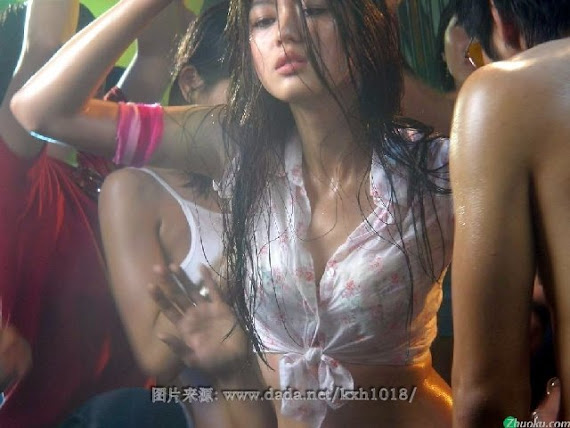People’s images of the cowboy don’t quite fit the reality. For example, people often think of all cowboys as white Americans. Actually, the first cowboys were Mexican; many cow¬boy customs began in Mexico. There were also black cowboys—often ex-slaves freed by the Civil War —and Indian cowboys. People also forget that the cowboy’s main job was to take care of cows and to get them to market. The cowboy’s life, although full of adventure , was hard and often boring.
Cattle Drives
In the mid-1860s, Texas cattle ranchers found that in other states, like Kansas, they could get ten times as much money for their cattle. This is how cattle drives got started. On the drives, cowboys took the cattle along trails from Texas up to Kansas and even further north.
The cattle of different owners grazed to¬gether in open grasslands. They were branded, or marked with their owner’s symbol. When it was time for the drive, the cowboys would round up the cattle that had the right brand. Brands were also meant to discourage rustlers , or cattle thieves; cattle owners chose brands that would be hard to change.
On the trail, cowboys worked from before sunup to after sundown. At night they took turns guarding the cattle. One constant dan¬ger was the stampede : a change in weather or an unexpected noise was enough to make the cattle run.
The era of the cattle drive—the real era of the cowboy—lasted only about twenty years. As more land was fenced in, cattle could no longer graze freely. There were also too many cattle. By the late 1880s, some cattle trails were actually crowded!
Modern Cowboys
Today, there are still cattle ranches and cow¬boys. The work in many ways remains the same. But with fences and modern machines, a lot has changed. Even cattle rustlers now use planes and helicopters !
Rodeos give modern cowboys a chance to show their skills. In the old days, when cow¬boys got bored on cattle drives, they often challenged each other in informal competi¬tions. Soon towns had more formal compe¬titions for cowboys. Today the Professional Rodeo Cowboys Association sponsors about 700 rodeos a year.
If you go to a rodeo you’ll see events like calf roping, bull riding, and bulldogging. Bulldogging was invented by Bill Pickett, a black cowboy, as a way of stopping steers that were running wild. Pickett would ride alongside a steer, then jump on it, grab its horns, som¬ersault across it, and pull the steer to the ground.
Texas and other western states have ranches that will take you on modern cattle drives. On a drive, you’ll live like a cowboy—sleeping on the ground and eating beans and beef. You’ll do work that cowboys do—round¬ing up and branding cattle. You won’t have to do any bulldogging, though!
The Rodeo
The rodeo, a festival of the American West, revolves around the occupation of cattle ranching, and displays the preoccupations of cowboys and cowgirls. In this competitive performance they ride horses, demonstrating skills important to the work of the cowboy.
This cowboy festival emerged not only from the work of the cattle ranch, but from the historical period in the United States when the Eastern half of the country claimed the Western half. Over time the cowboy became the symbol of that period and that space, what we can call the historical space known today as “The West,” within the United States, and the rodeo has become the festival featuring that symbol and telling that story through symbolic action.
The biggest cowboy festival is the 4-day rodeo that occurs annually, with the major day being July 4, the holiday that celebrates American independence as a nation. In addition to a rodeo performance every night three dances are held for all ages, public outdoor barbeques are offered in two locations, and a parade opens the event. Located in the heart of West Texas and surrounded by lar.
.jpg)
没有评论:
发表评论